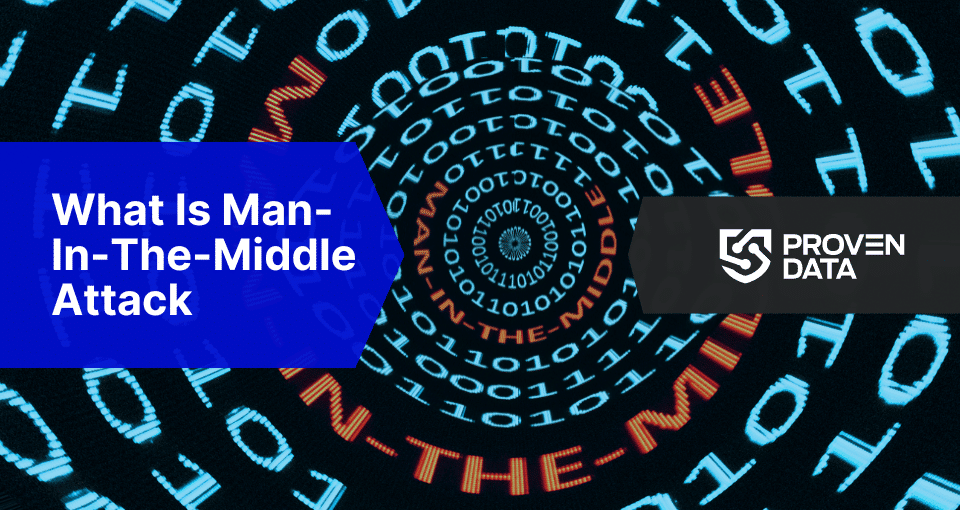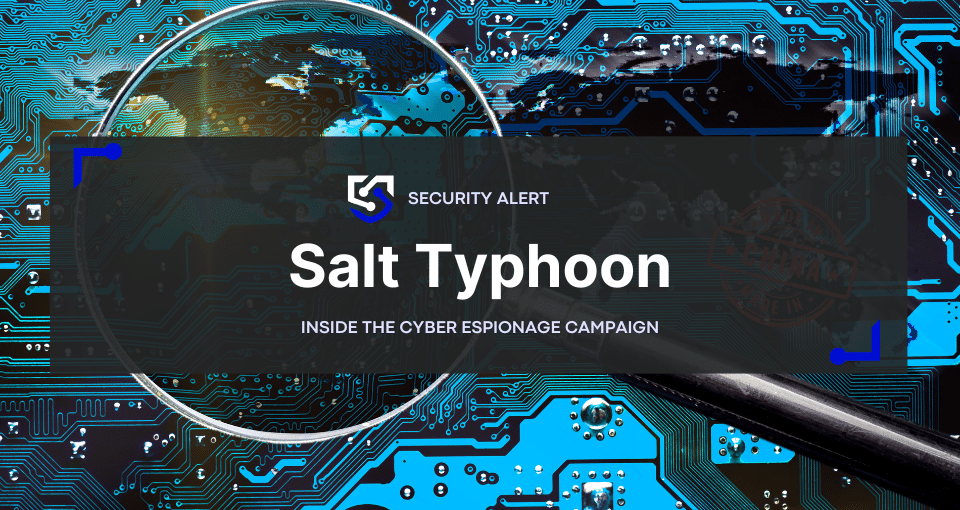A Man-In-The-Middle (MITM) is a type of cyberattack where threat actors secretly intercept and potentially alter the communication between two parties who believe they are directly communicating with each other.
This article will explore MITM attacks, explaining how they work, the types of MITM attacks, and how you can protect yourself from falling victim to these malicious activities.
How MITM attacks work
To understand MITM attacks better, imagine you’re sending a letter to a friend. Now, picture someone intercepting that letter, reading its contents, possibly changing the message, and then sending it on to your friend without either of you knowing. This is what happens in an MITM attack but with digital communications.
In technical terms, the attack typically involves two stages:
1. Interception
The first stage of an MITM attack involves the attacker intercepting the user’s data. This can happen through various methods, each with its own level of sophistication.
One common method is malware, which can find its way onto your device through seemingly harmless downloads, legitimate-looking email attachments, or even by visiting infected websites. Once installed, this malware can silently monitor and capture your data, sending it back to the attacker.
Another method of interception is Wi-Fi eavesdropping. This is particularly dangerous when using public Wi-Fi networks, which are often unsecured or poorly protected. When you connect to these networks, attackers can potentially intercept the data you’re transmitting. They might set up a fake Wi-Fi hotspot that looks legitimate, or they could exploit vulnerabilities in an existing network to capture data passing through it.
IP spoofing is yet another technique used for interception. In this method, attackers manipulate IP address information to make their device appear as a trusted network or device. By doing so, they can trick users into sending data directly to them, thinking they’re communicating with a legitimate source. This form of deception can be particularly effective because it exploits the trust we place in familiar IP addresses.
2. Decryption
Once the attacker has successfully intercepted the data, the next challenge they face is decryption, especially if the intercepted data is encrypted.
One approach attackers use is key cracking. Attackers may employ brute force methods, systematically trying every possible key combination until they find the right one. Alternatively, they might exploit patterns or weaknesses in the encryption algorithm. Once the key is compromised, the attacker can easily decrypt and access the intercepted data.
Another method involves exploiting vulnerabilities in encryption protocols. Attackers stay updated on the latest discovered vulnerabilities and may attempt to use these to bypass encryption without needing to crack the key. This is why keeping all software and security protocols up-to-date is crucial, as updates often include patches for known vulnerabilities.
Types of man-in-the-middle attacks
During an MITM, the attackers can place themselves at any point along the communication chain, meaning there are different types of execution. Let’s explore some of the most common types:
IP spoofing
In IP spoofing, the attacker disguises themselves as a trusted source by altering packet headers in an IP address. This tricks users into thinking they are communicating with a legitimate website or application.
DNS spoofing
DNS spoofing, also known as DNS cache poisoning, involves manipulating the Domain Name System to redirect traffic to fake websites. Users believe they’re accessing a trusted site, but they’re actually on a malicious one controlled by the attacker.
HTTPS spoofing
HTTPS spoofing exploits the trust we place in secure websites. The attacker sends a fake certificate to the victim’s browser, making it appear as though the victim is on a secure site when they are not.
Wi-Fi eavesdropping
This type of attack often occurs on public Wi-Fi networks. Attackers set up malicious Wi-Fi hotspots or intercept data on legitimate, unsecured networks, capturing sensitive information from unsuspecting users.
Session hijacking
In session hijacking, attackers steal or predict session tokens to gain unauthorized access to information or services on a computer system. This can allow them to impersonate a user and access their accounts.
Consequences of MITM attacks
MITM attacks can have severe consequences for both individuals and organizations. Some of the risks include:
- Theft of sensitive information (e.g., login credentials, credit card numbers)
- Identity theft
- Financial losses
- Damage to reputation (especially for businesses)
- Unauthorized access to personal or corporate data
How to protect yourself from MITM attacks
Defending against Man-in-the-Middle (MITM) attacks requires a comprehensive and multi-layered approach to cybersecurity. Implementing several protective measures can significantly reduce your risk of falling victim to these sophisticated attacks.
Secure your network connections
One of the most crucial steps in protecting yourself from MITM attacks is ensuring you’re always connected to a secure network, especially when accessing or transmitting sensitive data. This is particularly important when you’re away from your home or office network.
Public Wi-Fi networks, while convenient, can be a breeding ground for MITM attacks. Cybercriminals can easily set up rogue hotspots that mimic legitimate networks, tricking unsuspecting users into connecting to them. Once connected, the attacker can intercept all data transmitted over this network. Therefore, it’s best to avoid using public Wi-Fi for any sensitive transactions, such as online banking or accessing your email.
If you must use public Wi-Fi, consider using a Virtual Private Network (VPN) since it encrypts your internet connection, making it much more difficult for attackers to intercept and decipher your data, even if they manage to intercept it.
Prioritize encrypted connections
When conducting any online transactions or accessing sensitive information, always ensure you use a secure, encrypted connection. The easiest way to verify this is by looking for “HTTPS” at the beginning of the website’s URL, often accompanied by a padlock icon in your browser’s address bar.
HTTPS (Hypertext Transfer Protocol Secure) is a protocol that encrypts the communication between your device and the website you’re visiting. This encryption makes it extremely difficult for an attacker to read or modify any data sent during your session, even if they manage to intercept it.
It’s important to note that while HTTPS provides strong protection, it’s not foolproof. Sophisticated attackers may still attempt to intercept HTTPS connections through various means.
Verify website authenticity
Beyond looking for HTTPS, verifying the authenticity of the websites you’re visiting is crucial, especially when entering sensitive information. Cybercriminals often create convincing replicas of legitimate websites to trick users into entering their credentials or other sensitive data.
Always double-check the URL of the website you’re visiting. Look for subtle misspellings or unusual characters that might indicate a fake site. Many browsers now include built-in warnings for known phishing sites, but it’s always best to exercise caution and verify the site’s authenticity yourself.
Apply Multifactor Authentication
Implementing multifactor authentication (MFA) is a powerful way to protect against MITM attacks. MFA requires users to provide two or more verification factors to access an account or system, significantly increasing security.
With MFA, even if an attacker manages to intercept your username and password through an MITM attack, they would still need additional factors to gain access to your account.
These additional factors could include:
- Something you know (like a PIN or security question)
- Something you have (such as a smartphone app that generates time-based codes)
- Something you are (biometric data like fingerprints or facial recognition)
Keep your software updated
Regularly updating your operating system, browsers, and security software is crucial in defending against MITM attacks. These updates often include patches for newly discovered vulnerabilities that attackers could potentially exploit.
Enable automatic updates whenever possible, and make it a habit to check for and install updates regularly. This applies not just to your computer but also to your mobile devices, routers, and any other internet-connected devices you use.







